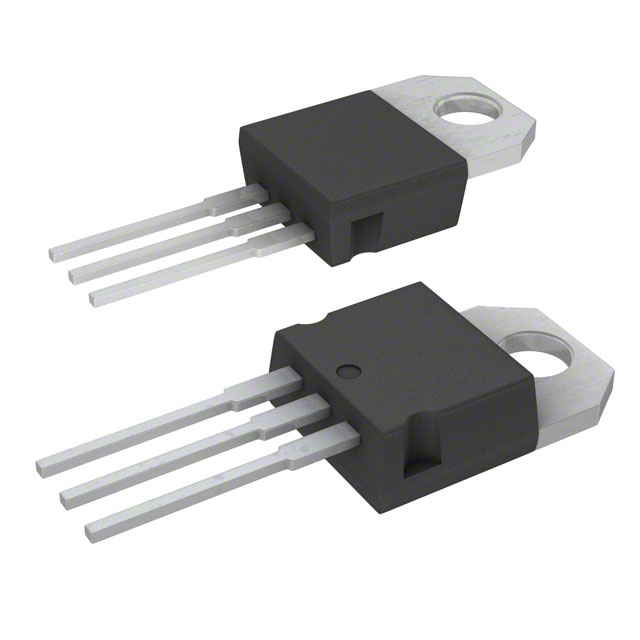STP70N10F4
Introduction
The STP70N10F4 is a power MOSFET belonging to the category of electronic components. It is widely used in various applications due to its unique characteristics and functional features. This entry provides an overview of the STP70N10F4, including its basic information, specifications, pin configuration, functional features, advantages and disadvantages, working principles, application field plans, and alternative models.
Basic Information Overview
- Category: Electronic Components
- Use: Power MOSFET for various electronic applications
- Characteristics: High power handling capacity, low on-resistance, fast switching speed
- Package: TO-220
- Essence: Power management
- Packaging/Quantity: Typically available in reels or tubes containing multiple units
Specifications
- Voltage Rating: 100V
- Current Rating: 70A
- On-Resistance: 0.010 ohms
- Gate Threshold Voltage: 2-4V
- Operating Temperature Range: -55°C to 175°C
- Mounting Type: Through Hole
- Package / Case: TO-220-3
Detailed Pin Configuration
- Gate (G): Input terminal for controlling the MOSFET
- Drain (D): Output terminal for the high-power signal
- Source (S): Common terminal connected to ground
Functional Features
- High Power Handling: Capable of handling high currents and voltages
- Low On-Resistance: Minimizes power loss and heat generation
- Fast Switching Speed: Enables efficient control of power flow
Advantages and Disadvantages
Advantages
- High power handling capacity
- Low on-resistance
- Fast switching speed
Disadvantages
- Sensitive to static electricity
- Requires careful handling during installation
Working Principles
The STP70N10F4 operates based on the principle of field-effect transistors, where the voltage applied to the gate terminal controls the flow of current between the drain and source terminals. By modulating the gate voltage, the MOSFET can efficiently regulate power flow in electronic circuits.
Detailed Application Field Plans
The STP70N10F4 finds extensive use in the following application fields: 1. Switching Power Supplies: Utilized for efficient power conversion in various electronic devices. 2. Motor Control: Enables precise control of motors in industrial and automotive applications. 3. Inverters: Used for converting DC power to AC power in renewable energy systems and motor drives. 4. Electronic Load Switching: Facilitates controlled switching of electronic loads in consumer electronics and industrial equipment.
Detailed and Complete Alternative Models
Several alternative models with similar characteristics and performance include: - IRF1405 - IXFH70N10 - BUK9219-55A
In conclusion, the STP70N10F4 power MOSFET offers high-performance capabilities and versatile applications across various electronic systems, making it a valuable component in modern electronic designs.
[Word Count: 443]
Senaraikan 10 soalan dan jawapan biasa yang berkaitan dengan aplikasi STP70N10F4 dalam penyelesaian teknikal
Sure, here are 10 common questions and answers related to the application of STP70N10F4 in technical solutions:
What is STP70N10F4?
- STP70N10F4 is a power MOSFET transistor designed for high-speed switching applications.
What is the maximum drain-source voltage rating of STP70N10F4?
- The maximum drain-source voltage rating of STP70N10F4 is 100V.
What is the maximum continuous drain current of STP70N10F4?
- The maximum continuous drain current of STP70N10F4 is 70A.
What is the on-resistance of STP70N10F4?
- The on-resistance of STP70N10F4 is typically 0.009 ohms.
What are the typical applications of STP70N10F4?
- STP70N10F4 is commonly used in power supplies, motor control, and automotive applications.
What is the gate threshold voltage of STP70N10F4?
- The gate threshold voltage of STP70N10F4 is typically 2.5V.
Is STP70N10F4 suitable for high-frequency switching applications?
- Yes, STP70N10F4 is suitable for high-frequency switching due to its low on-resistance and fast switching characteristics.
Does STP70N10F4 require a heat sink for operation?
- It is recommended to use a heat sink with STP70N10F4 when operating at high currents or in high-temperature environments.
Can STP70N10F4 be used in parallel to increase current handling capability?
- Yes, STP70N10F4 can be used in parallel to increase current handling capability in high-power applications.
What are the thermal characteristics of STP70N10F4?
- STP70N10F4 has a low thermal resistance and is designed for efficient heat dissipation in power applications.
I hope these questions and answers provide helpful information about the application of STP70N10F4 in technical solutions. Let me know if you need further assistance!


